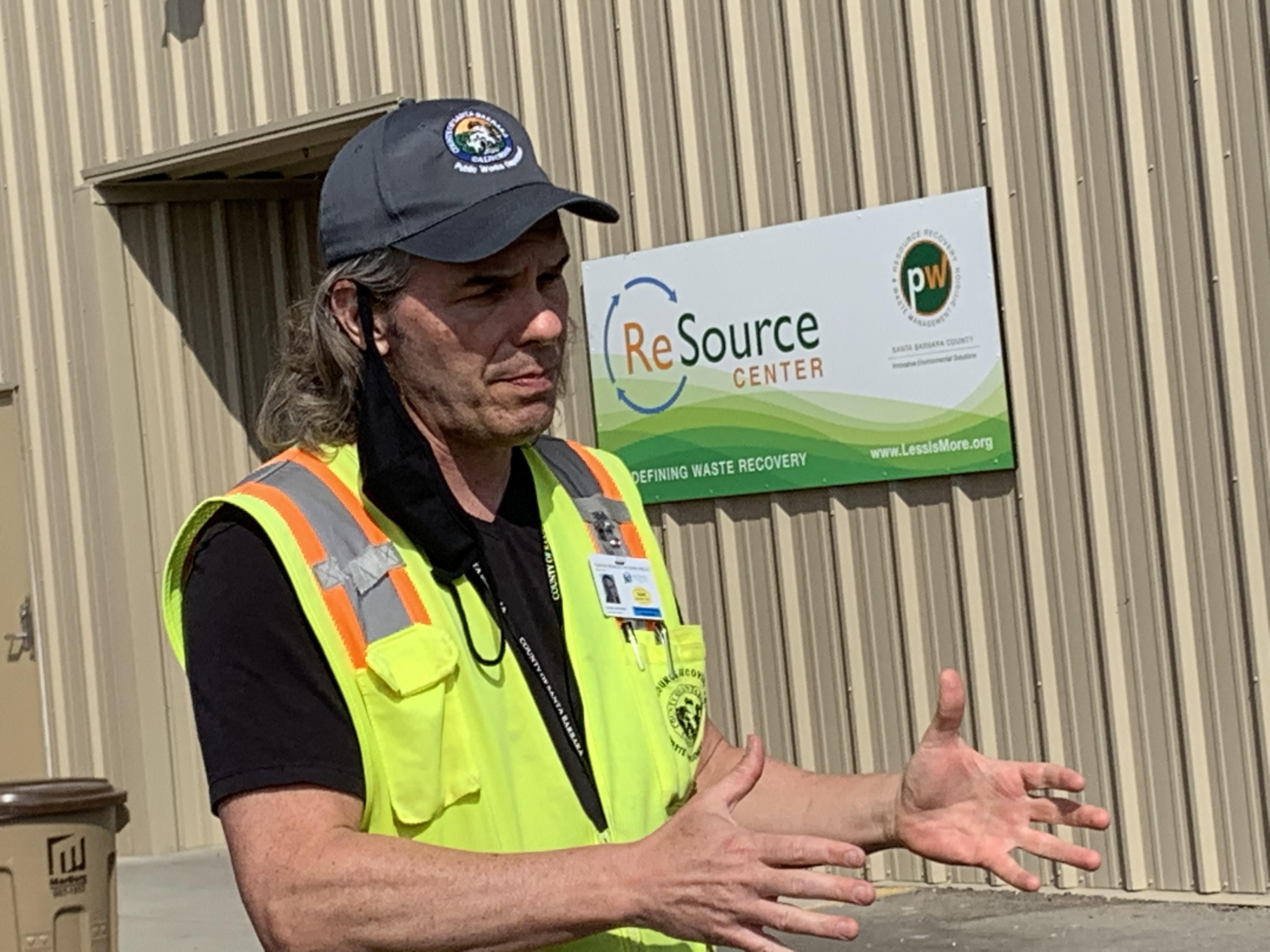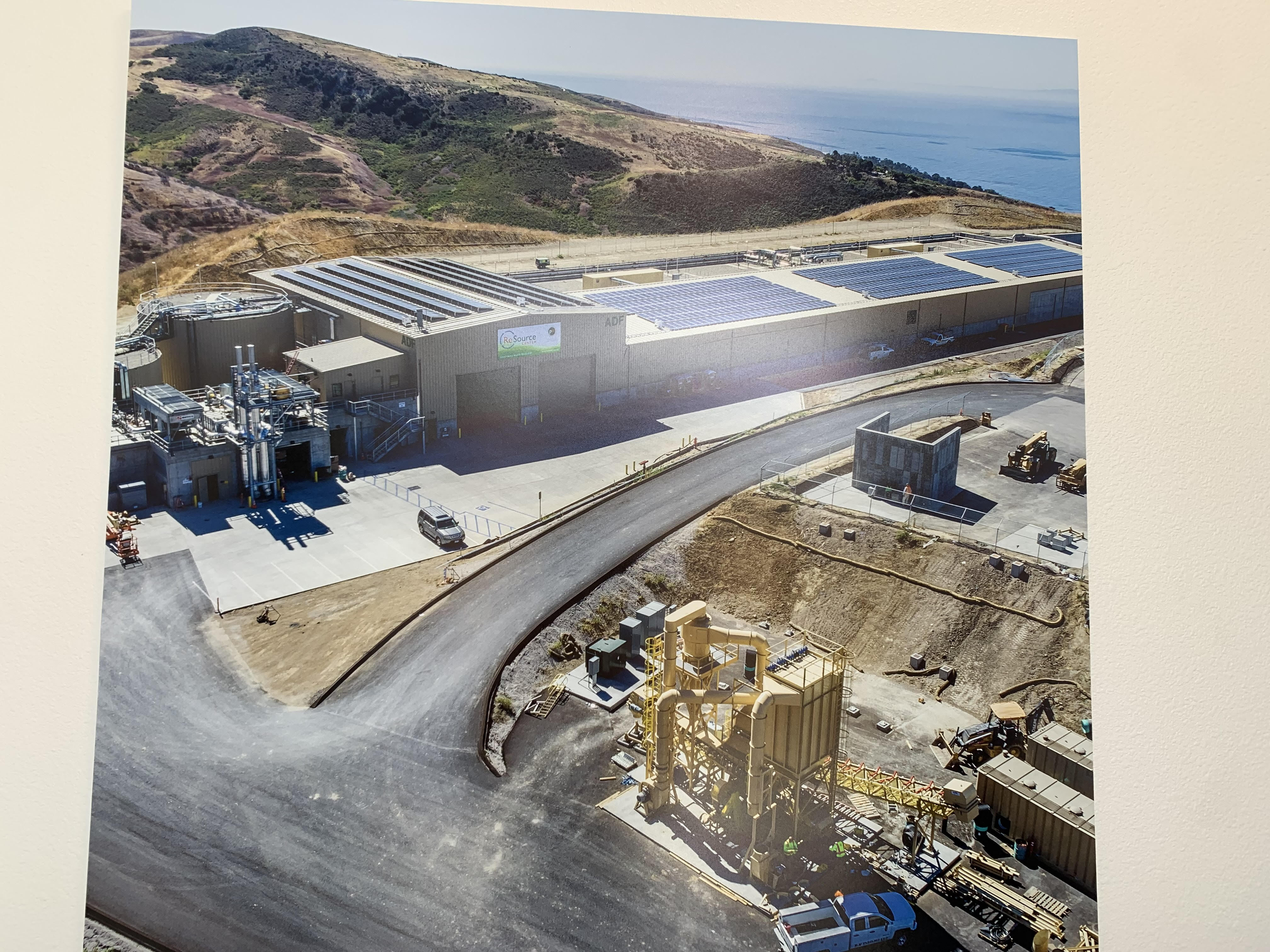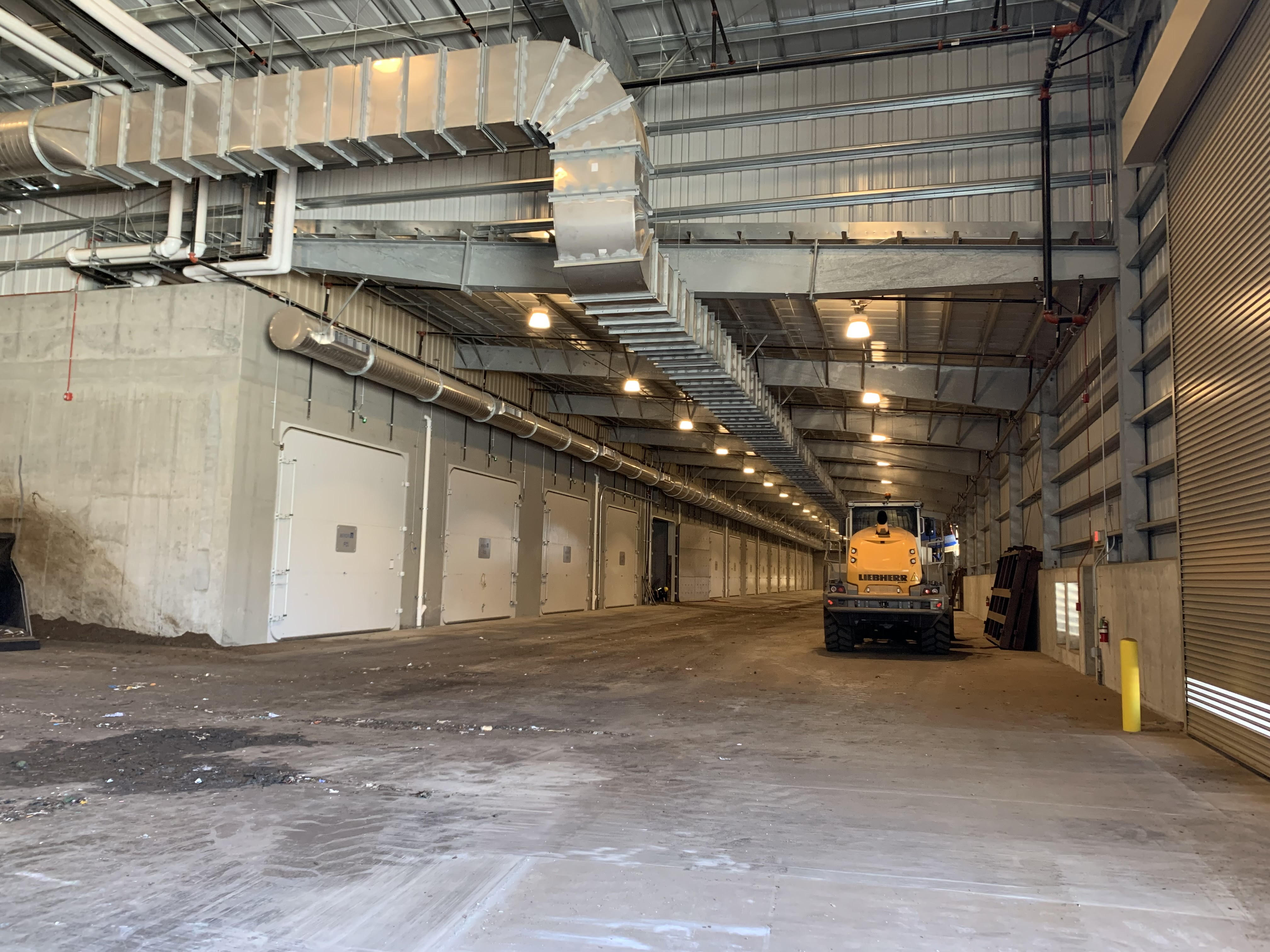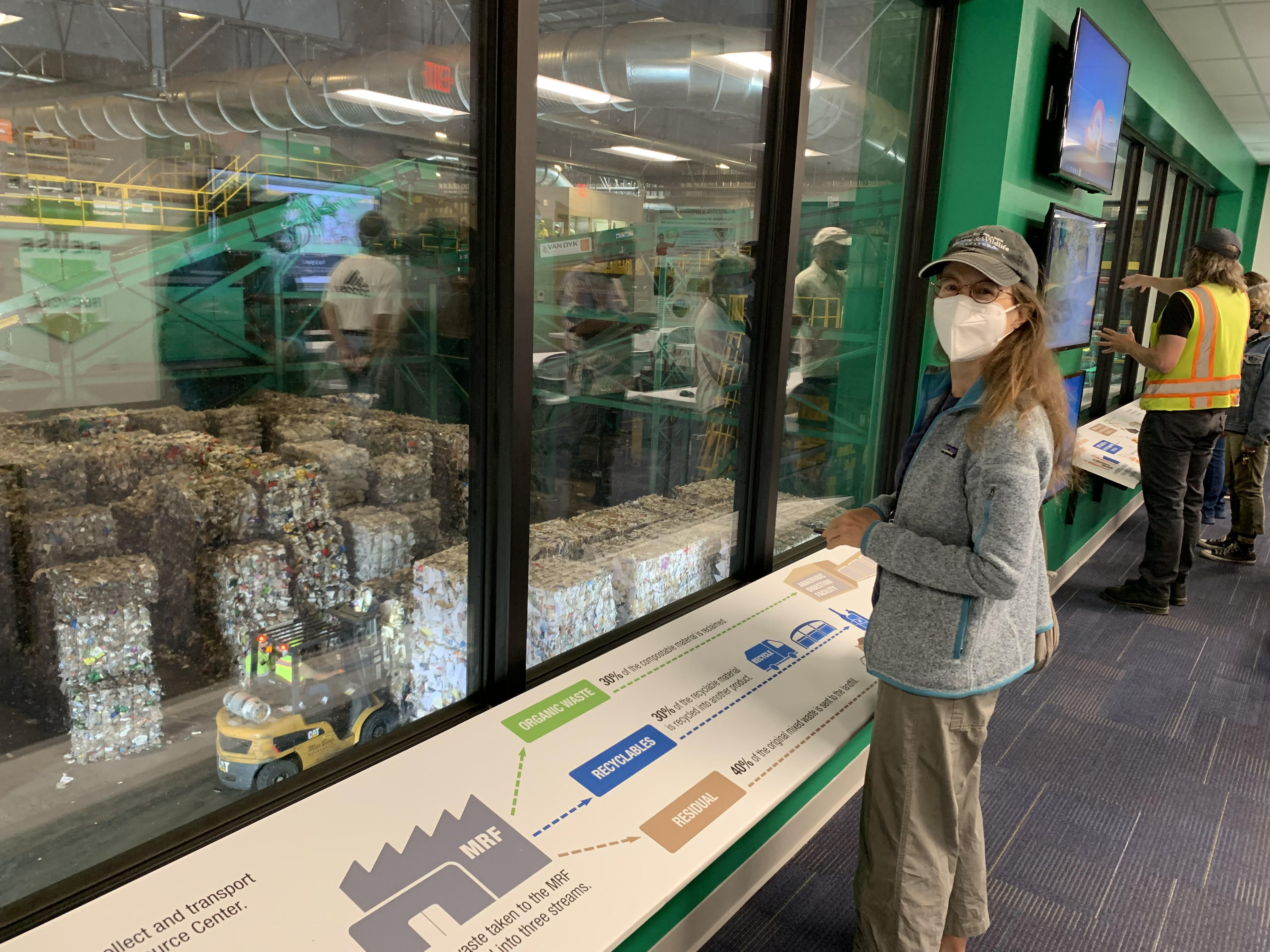By Katie Davis, Chapter Chair
There is a saying that democracy is the worst form of government – except for all the others.
The same could be said of our landfills, according to County employee Carlyle Johnston. “The Gaviota coast is the worst possible place for a landfill,” he said, pointing to the Tajiguas Landfill behind him, tucked away in a scenic Gaviota canyon, “except for all the alternatives.”
Carlyle is Project Leader with Santa Barbara County’s Resource Recovery & Waste Management Division and led our Sierra Club group on a tour of the newly updated facilities. He shared the inside story of what happens to all our trash.

He pointed out that no one wants or should live next to a landfill, but you also don’t want to drive trash too far either because of the environmental impact. By that measure we’re doing well locally. There’s a landfill in Lompoc and one in Santa Maria. Tajiguas serves the rest of mid and south county, expect for Carpinteria, which sends its trash to Ventura.
The biggest landfill in our region is in Simi Valley. There are some old landfills in our cities, a reminder of when landfills were closer to people, such as Elings Park in Santa Barbara. In fact, watering its fields has caused old organic material to start releasing methane again, the ghost trash coming back to haunt us.
This decaying organic matter is the reason landfills are big sources of greenhouse gas pollution and why state law mandates we divert more organic material from landfills. When NASA did a flyover and identified “methane super-emitters” in 2016, the main culprits were various oil and gas facilities, as well as landfills, including Tajiguas. That is about to change.
On Aug. 30 the Tajiguas Anaerobic Digester Facility began operation. Now all organic waste from our trash cans – the dead flowers, the food scraps, the doggy doo – is separated out and sent to concrete bunkers where anaerobic (oxygen-free) bacteria break it down, releasing methane, which is captured and sent to an adjoining power plant that turns it into energy for use at the facility and for sale to SoCal Edison.
The remaining material will then be dried and converted to compost for local use.
The facility is also covered in solar panels, adding to the energy production. This means greatly lowered methane emissions – though pipes are still needed to capture the methane from our trash of yesteryear. With this new facility Tajiguas will produce more energy than it uses and reduce 117,000 metric tons of greenhouse gas emissions per year, equivalent to that emitted by 28,668 cars annually.


On average, every person in our county generates 2,034 pounds of trash per year or about 5.5 pounds per day. There’s a number we can all try to bring down by reducing one-time use plastics and otherwise wasting less. We can also get better at putting paper, cardboard, aluminum, and clean, dry glass and rigid plastics in the recycling bin. The sorted bales of these recyclables fetch a better price on the market than recyclable material tossed in the trash and help keep our trash prices down.
The state-of-the-art Tajiguas Materials Recovery Facility separates the trash. Optical scanners with video cameras and lights identify recyclable materials and use air jets, magnets, and electromagnetic fields to pull it out. The education room in the new facility overlooks this process so visitors can see the various conveyor belts in action.

Recyclables recovered from the trash are dirty and less valuable, but the good news is that pulling out organics and recyclables reduces the volume of trash otherwise buried in the landfill by 60%.
After being separated and bailed, our glass, aluminum, and some plastics are being recycled in California. The remainder, including all paper and cardboard, go to Asia. It is cheap to ship to Asia because so many container ships come here filled with goods and head back with empty space. According to Carlyle, cardboard trash has risen greatly from all our Amazon shopping during the pandemic.
As for our green waste, it’s all shredded and turned into mulch, which is used locally and helps reduce water use. We produce an above average amount of mulch per person on the South Coast. This “mulch metric” is the sign of a wealthy area with abundant yardwork and expansive landscaping.
As we surveyed our mountains of trash, the one from the 70s-90s, and the recent one forming from recent decades, long-time hike leader and board member, Robert Bernstein asked Carlyle what he wanted our take-away from the tour to be.
“This is the single biggest greenhouse gas reduction project in the county,” he said. “We need many more projects like this.” They may not all be perfect, but we need more renewable energy, more greenhouse gas reductions, more positive projects if we are to meet the challenge of the climate crisis.
To see the facilities and learn more, visit: www.LessIsMore.org